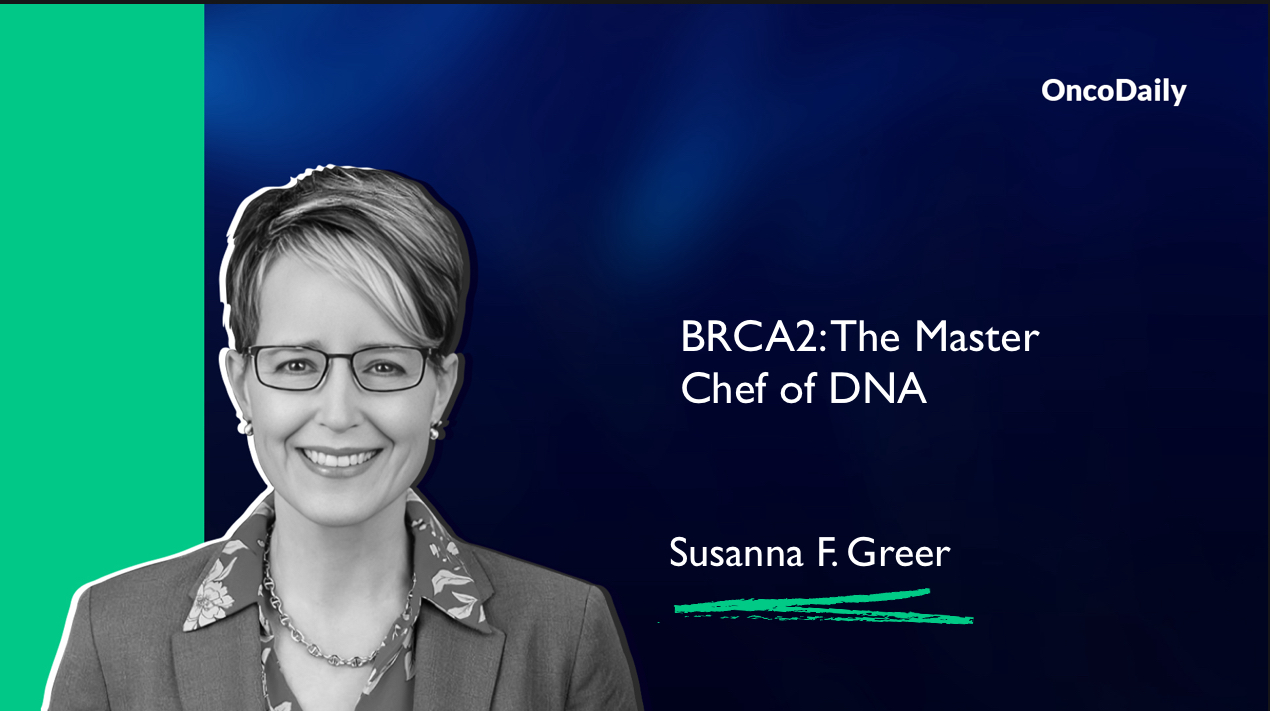Susanna F. Greer shared a post on LinkedIn:
“For this week’s Cool Cancer Find, imagine your DNA as a recipe book that contains all the instructions needed to run your body. If a page or recipe gets damaged or torn, it’s crucial to have a system in place to repair it, so you don’t end up with unanticipated outcomes.
This is where a key player called BRCA2 comes into the picture.
BRCA2 is like a master chef that specializes in repairing these damaged recipes. This chef is vital because if they don’t do their job right, the body might start using the damaged recipes, which can lead to problems like cancer.
To help with this important task, BRCA2 hires an assistant called RAD51.
This assistant helps by sticking to the damaged pages, making it easier for BRCA2 to focus on where the repair work is needed. Another important part of the team is DSS1, which acts like a special magnifying glass that the master chef uses. DSS1 is a tool that helps BRCA2 ‘see’ exactly where the damage is on the recipe pages. When there’s a tear in the recipe book, BRCA2 uses DSS1 to zero in on the damaged area, then brings in RAD51 to help fix the tear.
Together, they perform a precise repair job, ensuring the recipe is as good as new.

The V Foundation Grantee Weixing Zhao and team at UT MD Anderson Cancer Center UTHealth Houston Graduate School of Biomedical Sciences study BRCA2 and in a VERY cool new study found some surprising things about how BRCA2 and DSS1 work together to repair damage and prevent problems like cancer.
Dr. Zhao’s study shows that BRCA2 has more abilities than we’ve thought. BRCA2 is not just a master chef for single pages (single-stranded DNA); it can also handle whole sections of the book that are still bound together (double-stranded DNA).
Normally, this isn’t something we’d want, BRCA2 should be focusing on the single pages where the most critical repairs are needed. This is where DSS1 comes in handy: the Zhao team showed that DSS1 doesn’t just act as a magnifying glass; it also acts like a guide, helping BRCA2 to focus only on the single pages that need fixing and keeping it from getting distracted by the whole sections.
Why does this matter for cancer treatment? Understanding this teamwork gives Dr. Zhao and other researchers brand new ideas on how to tackle cancer.
Developing drugs that disrupt the BRCA2-DSS1 partnership or that target how DSS1 makes BRCA2 focus, could make the DNA repair process less efficient in cancer cells.
By preventing cancer cells from fixing their damage, researchers can make treatments even more effective. And that is very cool.
Read Dr. Zhao’s paper here.
follow the Zhao lab here.”
Source: Susanna F. Greer/LinkedIn
Susanna F. Greer is the Chief Scientific Officer at the V Foundation. Before this role, Dr. Greer was a Senior Scientific Director at the American Cancer Society, where she led the Biochemistry and Immunology of Cancer Research Program. Greer’s work focuses on identifying crucial signaling pathways in the immune response to cancer and has led to significant discoveries in molecular immunology and new epigenetic targets.
